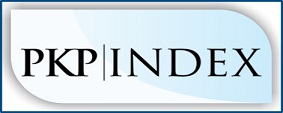Profil Collaborative Problem Solving Siswa Kelas IX dalam Memecahkan Masalah Aljabar
Abstract
Collaborative problem solving (CPS) merupakan kemampuan individu untuk bekerja sama dalam memecahkan suatu masalah. CPS menjadi kemampuan yang harus dikuasai individu, karena CPS menjadi salah satu kemampuan penting yang banyak dibutuhkan di dunia pendidikan maupun dunia kerja. Tujuan dilakukannya penelitian ini yaitu untuk mendeskripsikan profil collaborative problem solving siswa kelas IX dalam memecahkan masalah aljabar. Metode penelitian yang digunakan yaitu metode penelitian kualitatif. Penelitian ini diawali dengan mencari subjek penelitian. Subjek yang diteliti merupakan 1 pasang siswa kelas IX. Langkah selanjutnya yaitu memberikan tes pemecahan masalah kolaboratif aljabar dan melakukan wawancara dengan subjek. Hasil penelitian menunjukkan bahwa tingkat kemampuan CPS subjek berada pada tingkat 2 berdasarkan skala kemampuan collaborative problem solving dari PISA. Hasil yang diperoleh tersebut tidak dapat menggambarkan profil cps masing-masing individu yang menjadi subjek. Terjadi aktivitas saling berkomunikasi, saling berbagi informasi dan memberikan bantuan yang ditunjukkan subjek saat memecahkan masalah. Namun, tidak terjadi pembagian peran dan tugas secara jelas antar keduanya. Selain itu, langkah-langkah penyelesaian masalah yang dilakukan juga minim penggunaan konsep dikarenakan mereka belum mampu memodelkan masalah matematika dengan baik.
Downloads
References
Albert, L. R., & Kim, R. (2013). Mathematics Education at Teachers College. Journal of Mathematics Education at Teachers College, 4, 32–38.
Aronson, E., & Patnoe, S. (1997). The Jigsaw Classroom: Building Coopeation in The Classroom (2nd ed.). New York: Longman.
Bahar, A., & June Maker, C. (2015). Cognitive backgrounds of problem solving: A comparison of open-ended vs. closed mathematics problems. Eurasia Journal of Mathematics, Science and Technology Education, 11(6), 1531–1546. https://doi.org/10.12973/eurasia.2015.1410a
Clavert, M. (2017). Industry 4.0 Implications for Higher Order Institutions. Retrieved July 5, 2020, from https://universitiesofthefuture.eu/wp-content/uploads/2019/02/State-of-Maturity_Report.pdf
Dillenbourg, P. (1999). Collaborative Learning: Cognitive and Computational Approaches. New York: Emerald Publishing.
Fiore, S. M., Graesser, A., Greiff, S., Griffin, P., Gong, B., Kyllonen, P., Massey, C., O’Neil,
H., Pellegrino, J., Rothman, R., Soulé, H., & Davier, A. Von. (2013). Collaborative problem solving. In Instructional-Design Theories and Models: A New Paradigm of Instructional Theory (Vol. 2). https://doi.org/10.4324/9781410603784-17
Graesser, A., Kuo, B.-C., & Liao, C.-H. (2017). Complex Problem Solving in Assessments of Collaborative Problem Solving. Journal of Intelligence, 5(2), 10. https://doi.org/10.3390/jintelligence5020010
Griffin, P., & Care, E. (2014). Developing learners’ collaborative problem solving skills. http://vplearningdiaries.weebly.com/uploads/9/4/9/8/9498170/developing_learners_collaborative_problem_solving_p_griffin.pdf
Keast, R., & Mandell, M. P. (2013). Collaborative Competencies/Capabilities. Canberra: Australian Research Alliance for Children and Youth
Klein, C., DeRouin, R. E., & Salas, E. (2006). Uncovering Workplace Interpersonal Skills: A Review, Framework, and Research Agenda. International Review of Industrial and Organizational Psychology, 79-126. https://doi.org/10.1002/9780470696378.ch3
Lai, E., DiCerbo, K., & Foltz, P. (2017). Skills for Today: Collaboration. In Executive Development (Vol. 3, Issue 4).
Laterell, C. M. (2013). What Is Problem-solving Ability ? LATM JOurnal, 1(1), 1–12.
OECD. (2010). PISA 2012 Field Trial Problem Solving Framework. Retrieved July 5, 2020, from https://www.oecd.org/pisa/pisaproducts/46962005.pdf
OECD. (2016). Chapter 4 tables: How skills are used in the workplace. https://doi.org/10.1787/9789264258051-table78-en
OECD. (2017). PISA 2015 collaborative problem-solving framework july 2017 1. Journal of the Learning Sciences, 2(2), 1–5. https://doi.org/10.1080/02602930802691572
Santos, M. L. K. P., Belecina, R. R., & Diaz, R. V. (2015). Mathematical Modeling: Effects on Problem Solving Performance and Math Anxiety of Students. International Letters of Social and Humanistic Sciences, 65(2013), 103–115. https://doi.org/10.18052/www.scipress.com/ilshs.65.103
Schwartz, D. L. (1995). The Emergence of Abstract Dyad Representations in Dyad Problem Solving. The Journal of Learning Sciences, 53(9), 1689–1699. https://doi.org/10.1017/CBO9781107415324.004
Sears, D., & Reagin, J. (2013). Individual versus Collaborative Problem Solving: Divergent Outcomes Depending on Task Complexity. Instructional Science: An International Journal of the Learning Science, 1153-1172.
Siswono, T. Y. (2019). Paradigma Penelitian Pendidikan: Pengembangan Teori dan Aplikasi Pendidikan Matematika. Bandung: PT Remaja Rosdakarya.
Sugiarti, L., & Retnawati, H. (2019). Analysis of student difficulties on algebra problem solving in junior high school. Journal of Physics: Conference Series, 1320(1). https://doi.org/10.1088/1742-6596/1320/1/012103
Widjajanti, D. B. (2009). KEMAMPUAN PEMECAHAN MASALAH MATEMATIS MAHASISWA CALON GURU MATEMATIKA: APA dan BAGAIMANA MENGEMBANGKANNYA P-25 Oleh. Seminar Nasional Matematika Dan Pendidikan Matematika, 3(2), 402–413.
Copyright (c) 2020 Nur Hidayatul Hikmah, Tatag Yulia Eko Siswono

This work is licensed under a Creative Commons Attribution-ShareAlike 4.0 International License.



1.jpg)














